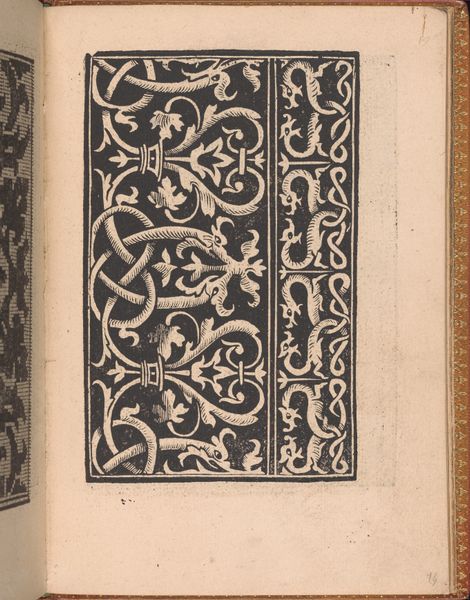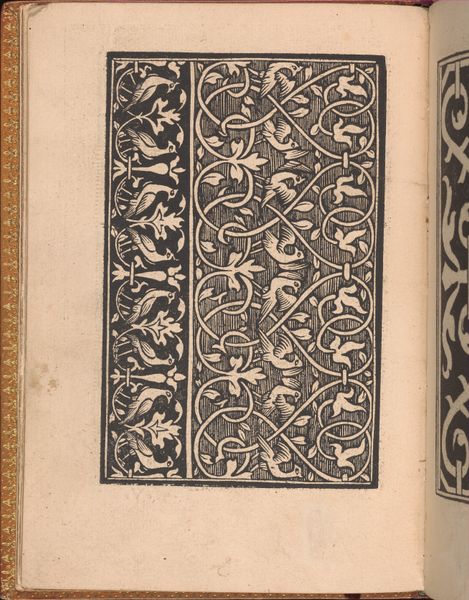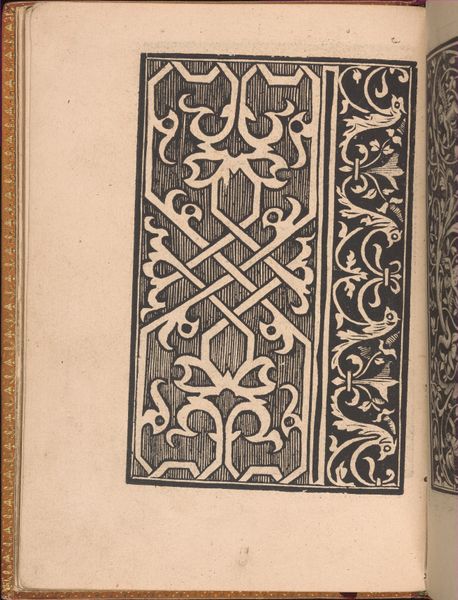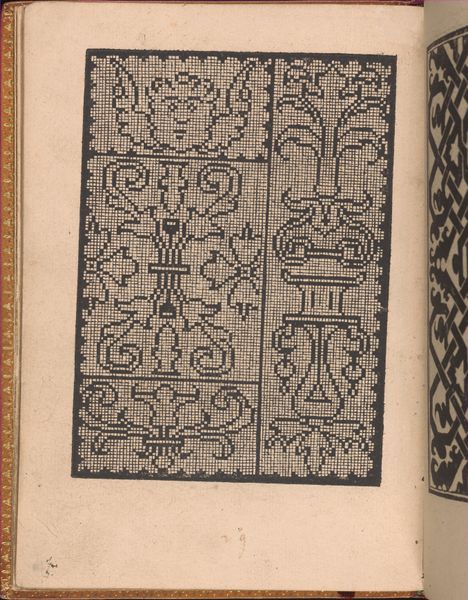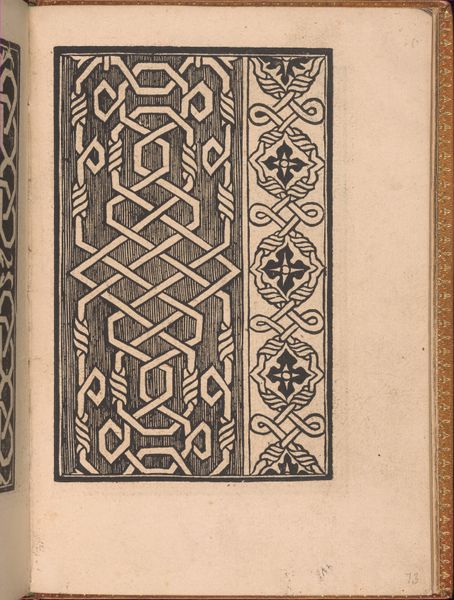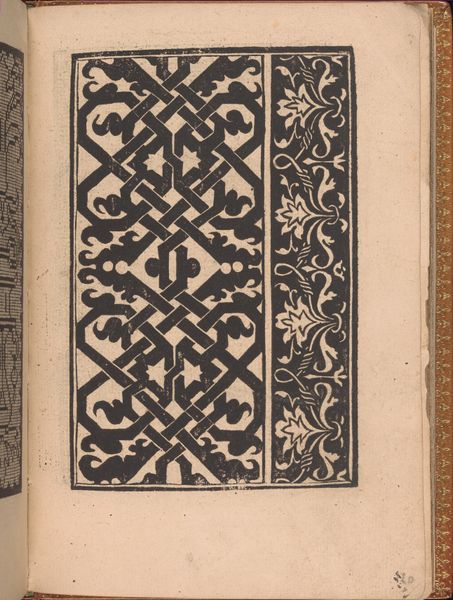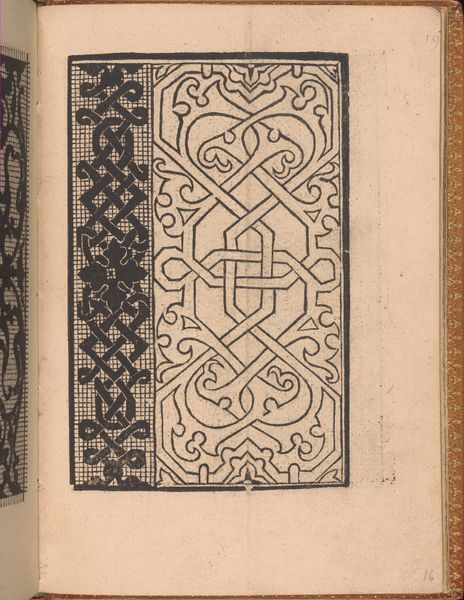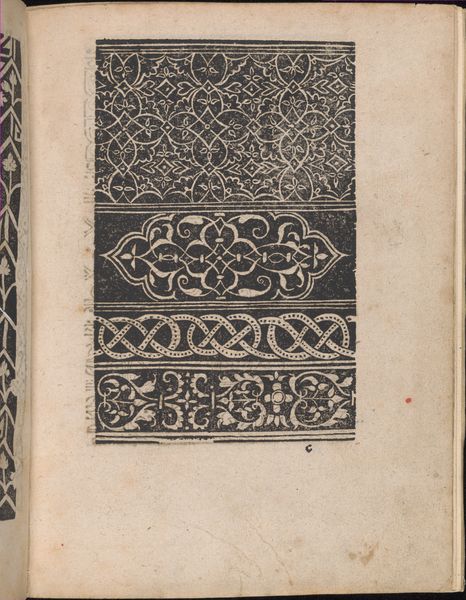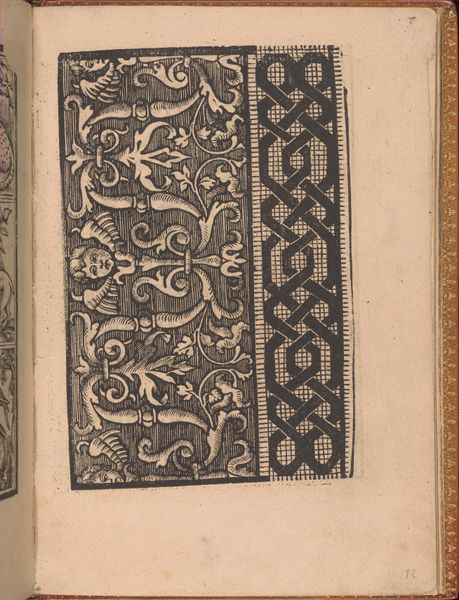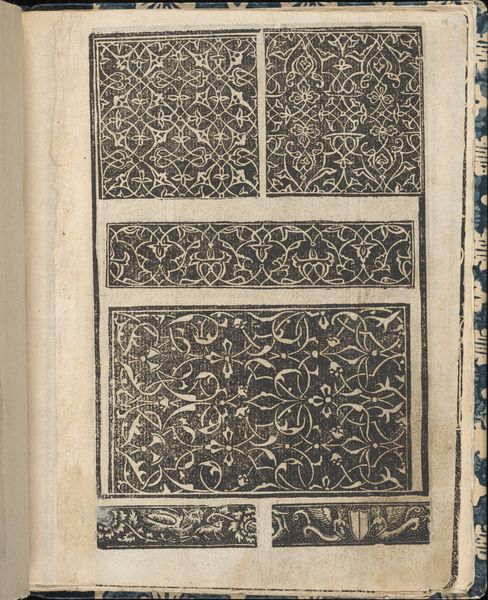
drawing, graphic-art, print, intaglio, textile, woodcut, engraving
#
drawing
#
graphic-art
# print
#
intaglio
#
textile
#
11_renaissance
#
geometric
#
woodcut
#
italian-renaissance
#
engraving
Dimensions: Overall: 7 7/8 x 5 1/2 in. (20 x 14 cm)
Copyright: Public Domain
Curator: Here we have a page from Nicolò Zoppino’s *Convivio delle Belle Donne*, or *Banquet of Fair Women*, created in 1532. It is currently located at the Metropolitan Museum of Art in New York. Editor: My first impression is that the visual language feels very precise and controlled, although, I feel a visual relationship with Islamic textile patterns and architecture as I peer closer. I wonder about the processes required to make something like this? Curator: Indeed, these intricate designs show an elaborate system of visual representation and have precedents that predate Zoppino. Notice how these Renaissance patterns combine organic, vegetal motifs with strictly geometric interlaces and knotwork. Such ornament would've suggested notions of beauty, sophistication, virtue. Editor: Given this was a printed design intended for textiles and needlework, it emphasizes the transfer of labor as an element. Each page, through techniques like woodcut or engraving, serves almost like a blueprint to guide artisans through production. This would influence not just the design but also the scale and how patterns were repeated or adapted in various media, underscoring a hierarchy of skill. Curator: Precisely! And one could also interpret this dissemination of imagery as indicative of certain desires present in society and culture at that time. Motifs from other cultures become symbols or acquire their own localized value once integrated. Here, one sees a moment of cultural intersection, but also, perhaps, one could see examples of appropriation, and definitely of adaptation. Editor: Adaptation is the operative word here. These prints weren’t just about replicating designs, but empowering craftspeople to personalize their work. Think of how a simple geometric interlace could evolve into an intricate family emblem embroidered onto clothing, a symbol of wealth and heritage. The value lies in that transition, adding depth and personalization to consumer goods of the time. Curator: It provides us, still today, with the sense of continuity across time, witnessing cultural memories encoded within these motifs, a chain connecting Zoppino’s moment with ours, offering pathways of shared symbolism and meaning. Editor: Thinking about how art functioned in people’s everyday lives gives us some very crucial insights, something Zoppino understood when crafting each detail for these elaborate patterns to ultimately reach people’s clothing.
Comments
No comments
Be the first to comment and join the conversation on the ultimate creative platform.
